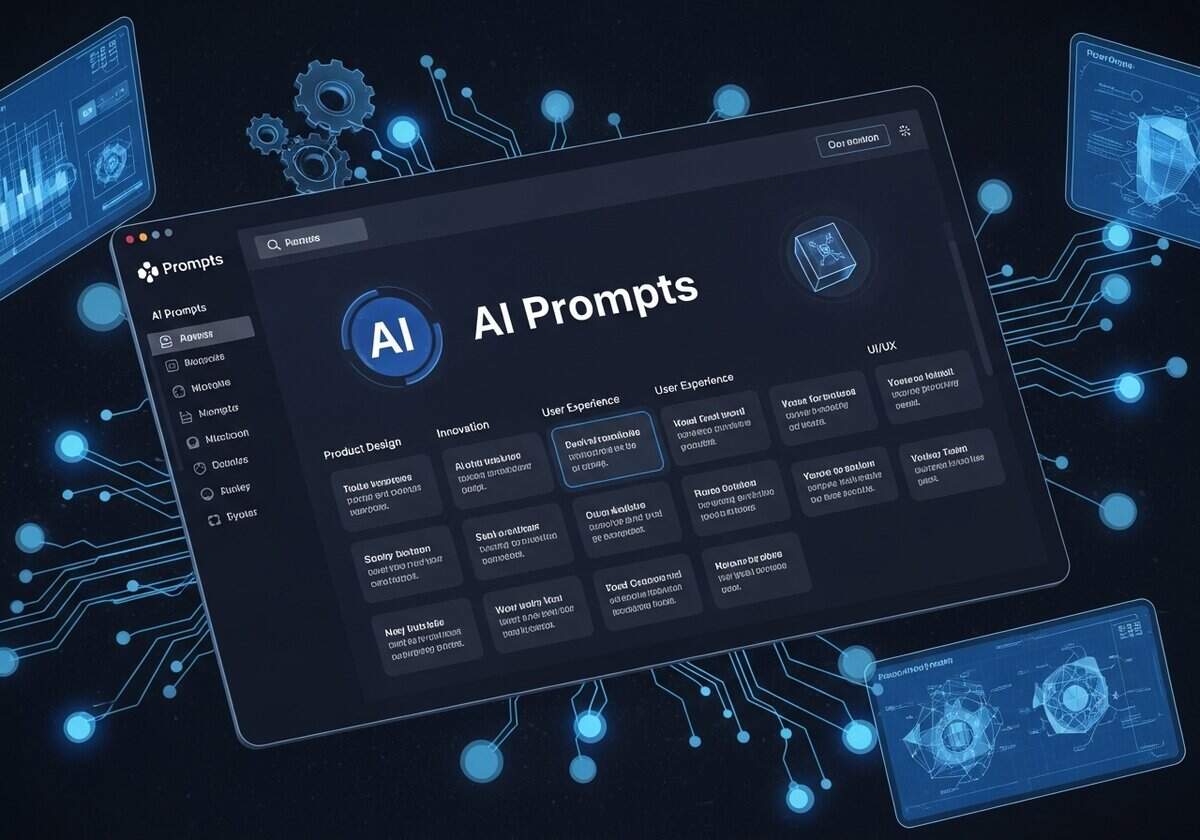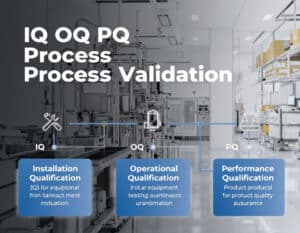Semplicemente la più grande directory di suggerimenti AI specializzata nella progettazione e nell'innovazione dei prodotti

Benvenuti nella più grande directory di istruzioni AI del mondo dedicata alla progettazione avanzata di prodotti, all'ingegneria, alla scienza, all'innovazione, alla qualità e alla produzione. Sebbene gli strumenti di intelligenza artificiale online stiano rapidamente trasformando il panorama ingegneristico aumentando le capacità umane, il loro vero potere è sbloccato attraverso istruzioni precise e sapientemente realizzate. Questo elenco completo offre una raccolta di istruzioni di questo tipo, che consentono di comandare sistemi di intelligenza artificiale in grado di elaborare grandi quantità di dati, identificare modelli complessi e generare soluzioni innovative in modo molto più efficiente rispetto ai metodi tradizionali.
Scoprite e mettete a punto i suggerimenti esatti necessari per sfruttare gli agenti AI online per ottimizzare i vostri progetti per ottenere prestazioni e producibilità massime, accelerare simulazioni complesse, prevedere con precisione le proprietà dei materiali e automatizzare una vasta gamma di attività analitiche critiche.
I filtri di ricerca avanzati consentono un accesso rapido a questa vasta directory e coprono l'intero spettro dell'ingegneria moderna.
Per motivi di tempo e di risorse del server, le richieste sono riservate ai soli membri registrati e non sono visibili in basso se non si è registrati. È possibile registrarsi, 100% gratuitamente:
È necessaria l'iscrizione
Per accedere a questo contenuto è necessario essere membri.
- Classificazione e categorizzazione
Prompt AI per Python Code for Simple Regression Model
- Progettazione per la produzione additiva (DfAM), Apprendimento automatico, Algoritmi di manutenzione predittiva, Prototipazione, Software, Kit di sviluppo software (SDK), Analisi statistica
Generates a basic Python script using scikit-learn for a simple linear or polynomial regression model. This script aims to predict an output variable from one or more input variables based on a sample CSV data snippet provided by the user facilitating quick model prototyping. The output is Python code.
Uscita:
- Pitone
- non richiede Internet in diretta
- Fields: {input_variables_names_csv} {output_variable_name} {sample_data_csv_snippet}
- Best for: ').split('
- Risoluzione dei problemi e diagnostica
Prompt AI per Identify causes of numerical instability
- Fluidodinamica computazionale (CFD), Progettazione per la produzione additiva (DfAM), Analisi delle modalità e degli effetti dei guasti (FMEA), Controllo di qualità, Gestione del rischio, Simulazione, Controllo statistico del processo (SPC)
This prompt evaluates the provided mathematical model description or code snippet {description} to identify potential sources of numerical instability or convergence issues. It outputs a detailed diagnostic report and recommendations for stabilization.
Uscita:
- Markdown
- non richiede Internet in diretta
- Fields: {description}
- Best for: Detecting and resolving numerical stability issues
- Generazione di codice e debug
Prompt AI per Generate Python code for symbolic integration
- Sistemi algebrici computerizzati (CAS), Matematica, Ottimizzazione del processo, Software, Kit di sviluppo software (SDK), Ingegneria del software, Analisi statistica, Sistema di algebra simbolica (SAS)
This prompt generates Python code using the SymPy library to perform symbolic integration of the input mathematical expression {expression} with respect to variable {variable}. The code should include comments explaining each step and handle definite integrals if {lower_limit} and {upper_limit} are provided.
Uscita:
- Pitone
- non richiede Internet in diretta
- Fields: {expression} {variable} {lower_limit} {upper_limit}
- Best for: Automating symbolic integration tasks
- Generazione o aumento dei dati
- Matematica
Prompt AI per Generate synthetic polynomial dataset
- Intelligenza artificiale (IA), Sistemi algebrici computerizzati (CAS), Matematica, Rete neurale, Algoritmi di manutenzione predittiva, Miglioramento dei processi, Analisi statistica
This prompt generates a synthetic dataset of polynomials with specified degree and coefficient ranges. The dataset includes polynomial expressions, their derivatives, and roots approximated numerically. This is useful for training or testing symbolic computation or algebraic algorithms.
Uscita:
- CSV
- non richiede Internet in diretta
- Fields: {degree} {coefficient_range_min} {coefficient_range_max} {number_of_polynomials}
- Best for: Synthetic polynomial data for algorithm testing and training
- Estrazione delle informazioni
Prompt AI per Extract eigenvalues and eigenvectors from matrix description
- Intelligenza artificiale (IA), Fluidodinamica computazionale (CFD), Progettazione per la produzione additiva (DfAM), Apprendimento automatico, Matematica, Analisi statistica, Test statistici
This prompt extracts all eigenvalues and eigenvectors described or listed in the input {text} related to a matrix or operator. It returns a CSV table with eigenvalue, multiplicity (if stated), and eigenvector components as comma-separated lists. This facilitates rapid cataloging of spectral properties from experimental logs or papers.
Uscita:
- CSV
- non richiede Internet in diretta
- Campi: {testo}
- Best for: Extracting spectral data from text
- Estrazione delle informazioni
Prompt AI per Extract function definitions from text
- Intelligenza artificiale (IA), Pensiero progettuale, Apprendimento automatico, Matematica, Ricerca e sviluppo, Analisi statistica, Test statistici
This prompt scans the input {text} to extract all mathematical function definitions, including their domain, codomain, and formula. The output is a JSON array where each element contains the function name, domain, codomain, and expression. This automates capturing function details from research papers or notes.
Uscita:
- JSON
- non richiede Internet in diretta
- Campi: {testo}
- Best for: Extracting structured function data from unstructured text
- Estrazione delle informazioni
Prompt AI per Extract mathematical constants from text
- Analisi della varianza (ANOVA), Progettazione per Sei Sigma (DfSS), Matematica, Controllo di qualità, Gestione della qualità, Analisi statistica, Test statistici
This prompt extracts and lists all mathematical constants and their values explicitly mentioned in the input {text}. It identifies constants like π, e, γ, and others, providing a neatly formatted LaTeX table with constant names, definitions, and numerical approximations. It is ideal for quickly isolating key constants from technical documents or notes.
Uscita:
- LaTeX
- non richiede Internet in diretta
- Campi: {testo}
- Best for: Extracting constants, reference documentation, summarizing numeric values
- Risoluzione dei problemi e diagnostica
- Matematica
Prompt AI per Analyze Numerical Model Instability or Errors
- Prevenzione degli errori, Matematica, Miglioramento dei processi, Garanzia di qualità, Controllo di qualità, Simulazione, Analisi statistica, Controllo statistico del processo (SPC)
A numerical simulation based on a mathematical model is producing unexpected or unstable behavior. The AI analyzes the model equations parameters and (optionally) discretization details to suggest potential mathematical sources of instability parameter sensitivities or significant discretization errors.
Uscita:
- Testo
- non richiede Internet in diretta
- Fields: {model_equations_and_parameters_text_or_latex} {description_of_unexpected_simulation_behavior_text} {simulation_code_language_and_key_algorithms_used_optional_text} {discretization_parameters_optional_text}
- Best for: Helping mathematicians diagnose unexpected behaviors in numerical simulations by pointing to potential mathematical instabilities parameter sensitivities or issues with discretization methods.
- Generazione di ipotesi
- Matematica
Prompt AI per Identify Patterns and Hypothesize from Mathematical Data
- Intelligenza artificiale (IA), Apprendimento profondo, Apprendimento automatico, Matematica, Ricerca e sviluppo, Analisi statistica, Test statistici
Analyzes a provided dataset of mathematical objects and their properties (e.g. graphs and invariants number sequences and divisibility) to identify non-obvious patterns or correlations. Based on these patterns the AI formulates a specified number of hypotheses as mathematical conjectures.
Uscita:
- Testo
- non richiede Internet in diretta
- Fields: {mathematical_objects_and_properties_csv_data} {target_property_for_correlation_or_focus_text} {number_of_hypotheses_integer}
- Best for: Discovering potential new mathematical relationships or theorems by analyzing datasets of mathematical objects and formulating data-driven conjectures.
- Risoluzione dei problemi e diagnostica
Prompt AI per Troubleshoot Basement Leakage
- Ingegneria Civile, Ingegneria edile, Ingegneria Ambientale, Geotecnica, Rilevamento perdite, Tecniche di risoluzione dei problemi, Gestione della qualità, Pratiche di sostenibilità, Contaminazione dell'acqua
Helps troubleshoot persistent water leakage in a basement by considering its design (textually described), construction materials, leakage history, previous repair attempts, and current environmental conditions. Suggests a diagnostic approach.
Uscita:
- Testo
- non richiede Internet in diretta
- Fields: {basement_as_built_details_description} {chronology_of_leakage_events_and_locations} {history_of_repair_attempts_and_materials_used} {current_environmental_conditions_e.g._rainfall_data}
- Best for: Providing a structured approach for civil engineers to diagnose complex basement leakage problems by considering all relevant factors and suggesting targeted investigations.



























Nessuno ha discusso i potenziali pregiudizi nella selezione dell'IA per queste directory? L'intelligenza artificiale non è immune da pregiudizi, gente.